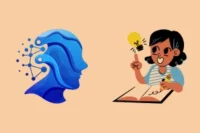Can AI Make Mistakes? Exploring How Errors Happen and How to Fix Them
Published: March 13, 2025
AI (Artificial Intelligence) is playing an increasingly important role in technology, powering everything from virtual assistants to self-driving cars. However, as advanced as AI systems are, they are not flawless. A key question is: “Can AI make mistakes?” This blog will explore how AI works, why it can make mistakes, and what those mistakes mean for its users, as well as how they can be reduced over time.
Understanding AI’s Capabilities
What AI Can Do
AI is capable of performing a wide variety of tasks, such as recognizing patterns, making predictions, and automating processes. These tasks include analyzing data, identifying trends, and improving decision-making by learning from past experiences.
How AI Learns
AI learns through processes like machine learning and neural networks. In machine learning, AI is trained on large sets of data, which helps it improve its predictions and decisions over time. Neural networks, modeled after the human brain, allow AI to recognize more complex patterns and adapt to new situations, constantly improving its capabilities as it processes more data.
Example
AI powers tools like virtual assistants (e.g., Siri and Alexa), which help users perform tasks like setting reminders or answering questions. It also powers recommendation systems (e.g., Netflix), suggesting movies or shows based on what a user has watched before, and refining those suggestions as it learns more about the user’s preferences.
Why AI Can Make Mistakes
Limitations of AI’s Understanding
AI may perform tasks well, but it doesn’t truly understand context or nuance like humans do. While AI can recognize patterns, it lacks the deeper understanding of situations that a human would have. This means that AI can misinterpret complex scenarios, especially when emotional intelligence or social context is involved.
Errors in Data
AI heavily relies on data to learn and make decisions. If the data it’s trained on is incorrect, incomplete, or biased, the AI can make mistakes. For example, if an AI system is trained on biased data, it may produce skewed results, leading to unfair or inaccurate decisions.
Training Problems
The way AI is trained plays a significant role in its performance. If the training data is flawed or incomplete, AI can struggle to recognize patterns or make accurate predictions. This can result in errors, particularly when the AI encounters unfamiliar situations or data that doesn’t fit the pattern it has learned.
Example
An example of AI making mistakes is in facial recognition technology, where AI can misidentify individuals due to poor image quality, bias in the training data, or difficulty recognizing faces in certain lighting or angles. These errors can have serious consequences, especially in security and identification systems.
Types of Mistakes AI Can Make
Data-Driven Mistakes
AI relies on data to make decisions, so errors can occur if the data is incorrect, incomplete, or biased. These mistakes happen when the AI is trained on data that doesn’t reflect reality or includes inaccuracies, causing it to make flawed predictions or decisions.
Misinterpretation of Context
AI can misinterpret situations because it lacks the human-like understanding of context. While it can recognize patterns, it may fail to grasp the full meaning or nuances of a situation, especially in complex or emotional scenarios. This leads to mistakes in decision-making where context is important.
Overfitting
Overfitting happens when AI is trained too specifically on a narrow set of data. In this case, the AI becomes too focused on memorizing the training data and struggles to apply that knowledge to new, unseen data. This causes errors when the AI is presented with scenarios outside of its training set.
Example
An example of AI mistakes is in hiring decisions. If AI is trained on biased data (such as past hiring decisions that favored certain demographics), it can produce unfair outcomes by favoring candidates based on patterns that reflect the bias in the data, rather than assessing candidates fairly.
Real-Life Examples of AI Making Mistakes
Facial Recognition Failures
AI-powered facial recognition software has been known to misidentify people, especially in cases where there is poor image quality, or the system was trained on biased data. For example, there have been incidents where facial recognition systems have mistakenly matched innocent people to criminal databases, leading to wrongful accusations and arrests.
Autonomous Vehicles
Self-driving cars, which rely on AI to navigate roads, have made errors that resulted in accidents. One well-known case involved an autonomous Uber vehicle in 2018, which failed to correctly identify a pedestrian crossing the road at night, leading to a fatal accident. These incidents highlight how AI can misjudge complex real-world situations, like predicting pedestrian movements.
Voice Assistants
Virtual assistants like Siri and Alexa sometimes misunderstand spoken commands, leading to incorrect responses or actions. For example, a voice assistant might misinterpret an ambiguous command, such as “turn on the lights,” and instead perform a completely different action, like playing music, causing frustration for users.
Example
AI tools like chatbots can also make mistakes in understanding user requests. For instance, a customer service chatbot may misinterpret a customer’s complaint due to ambiguous phrasing or a lack of context, resulting in an irrelevant or unhelpful response that leaves the user dissatisfied.
Can AI Be Improved to Reduce Mistakes?
Improved Training Data
One of the key ways to reduce AI mistakes is by using better, more diverse training data. The more representative and accurate the data is, the better AI can learn to make correct decisions. By ensuring that AI is exposed to a wide range of data, including different scenarios, cultures, and contexts, it can become more reliable and less likely to make biased or inaccurate errors.
Continuous Learning
AI can improve over time by continuously learning from new data and feedback. As it encounters more real-world situations and receives corrections, AI systems can adjust and enhance their decision-making abilities. This process, known as “continuous learning,” allows AI to stay updated and adapt to new challenges, reducing the likelihood of mistakes in the future.
Human Oversight
While AI has the potential to reduce errors, human oversight remains essential. Humans can monitor AI’s performance, catch mistakes, and make necessary adjustments to ensure ethical and accurate decision-making. By providing guidance and correcting errors, human intervention plays a critical role in improving AI systems and preventing harmful consequences.
Example
An example of AI improvement is in image recognition systems. When AI is trained on a diverse set of images, it becomes better at recognizing faces, objects, or scenes under different conditions. As the system is exposed to more varied data (such as different lighting, angles, or ethnicities), its ability to accurately identify images improves, reducing the chance of errors.
Conclusion
AI can make mistakes, often due to limitations in data, understanding, and training. These errors highlight the importance of improving data quality and the learning process. However, with human oversight and continuous improvement, many of these mistakes can be reduced. As AI continues to evolve, staying informed about its progress will help us integrate it more effectively into daily life, minimizing errors and maximizing its potential.
AI can make decisions based on data and algorithms, but it still requires human oversight to ensure accuracy and ethical outcomes.
AI makes mistakes because it relies on data, and if the data is flawed or incomplete, the AI’s decisions can be inaccurate.
While AI can improve over time, it is unlikely to ever be completely error-free due to its reliance on data and algorithms.





